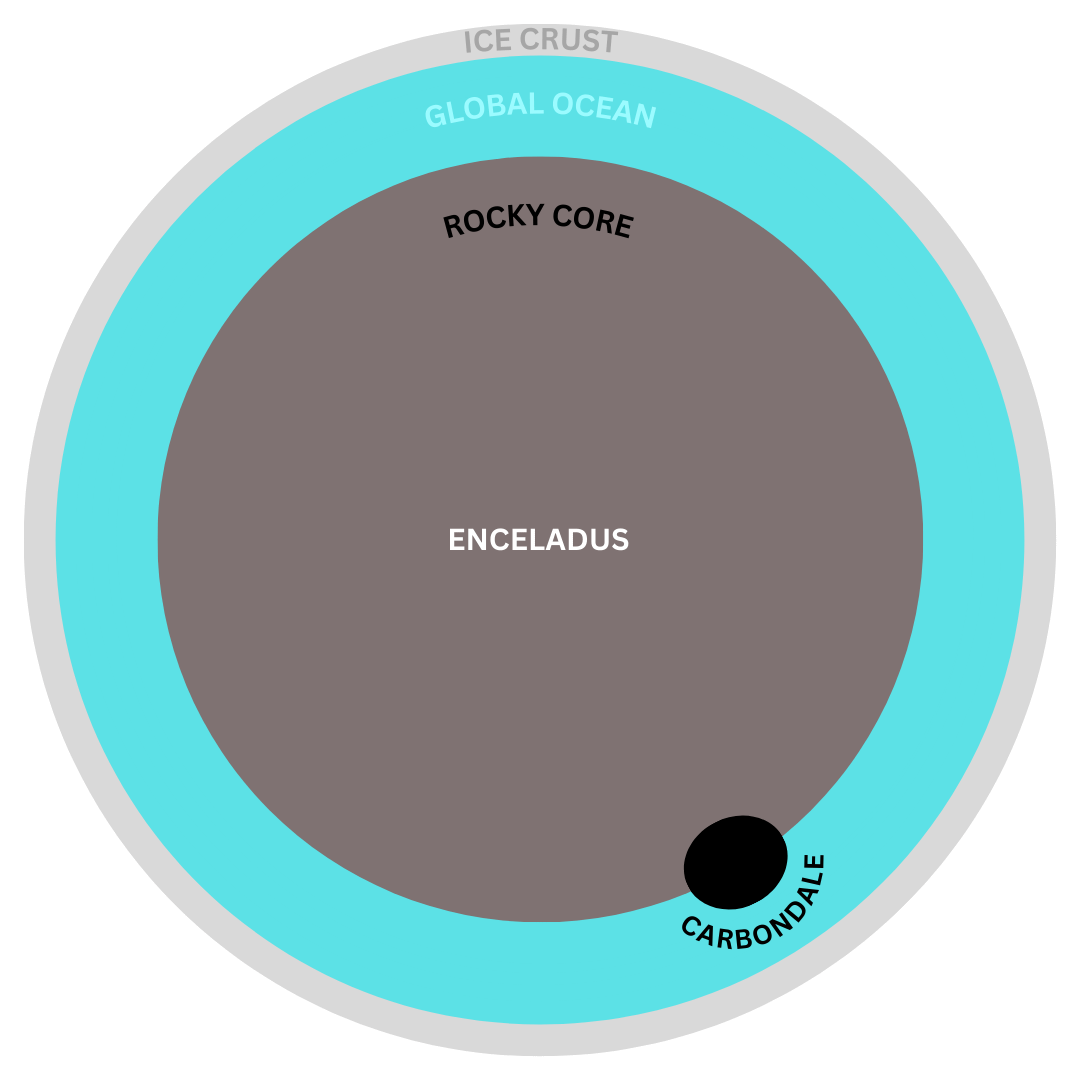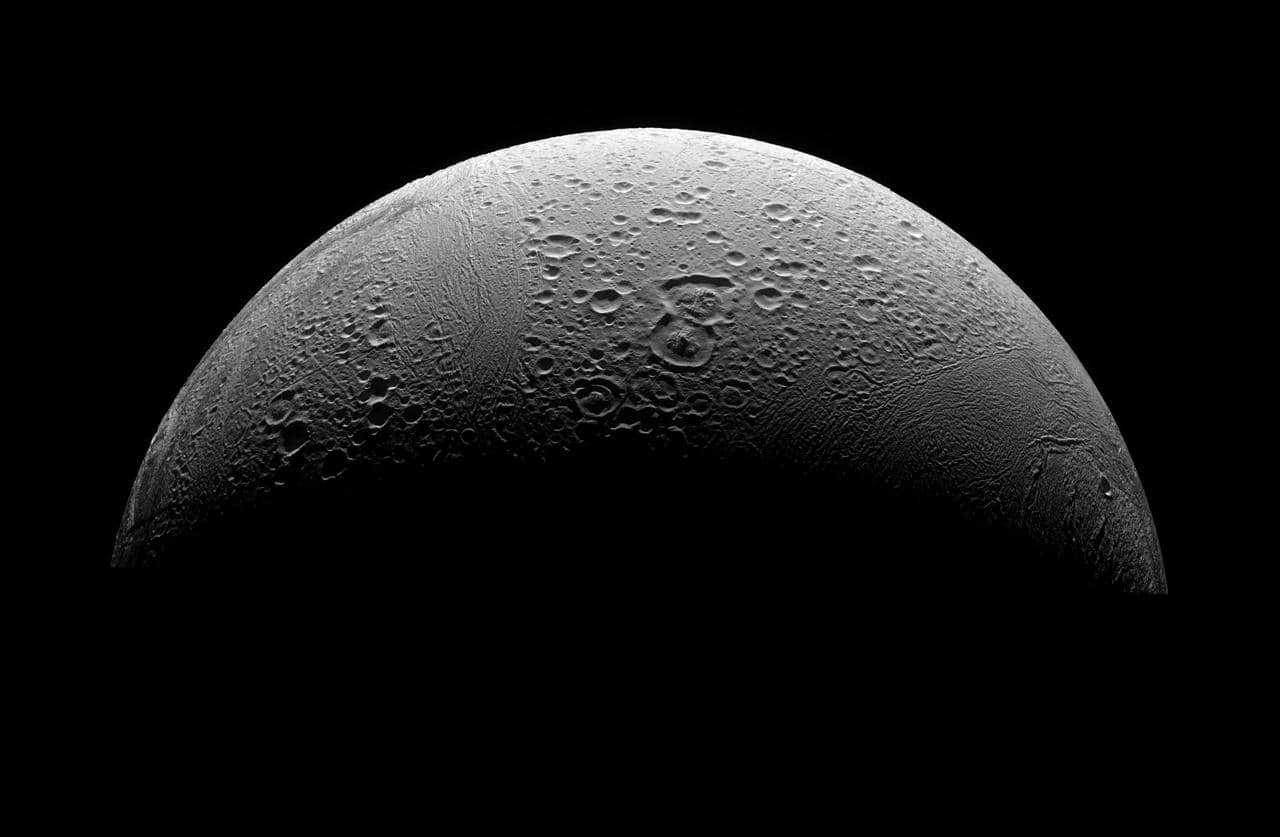

Microbial Salvation: Hope for Enceladus
The microbes on Enceladus are trying to readapt to their environment in the wake of their depleting carbon resource
Story
Pablo wasn’t anything like his family or friends, who fed off of corpses. Pablo liked exploring and ventured through areas of Enceladus where no ‘crobe had gone before! Pablo had heard about an ongoing crisis in their world, but nobody explained the problem, thinking he was too young for that. “I am just looking for answers. You seem to be a blunt ‘crobe. Do you mind telling me what’s wrong with our world? I could be of some help.” said Pablo.
Millie was hesitant at first but decided to deal with the youngster politely. She explained to Pablo how their town was running out of resources. When life started to emerge and evolve on Enceladus, the first species of microbes assumed the responsibility of using all kinds of minerals and nutrients to sustain. Everything changed when a giant organic carbon-rich meteorite hit the surface and sank into the bottom where all the ‘crobes lived; that’s how our town of Carbondale came into existence. The society hadn’t seen such a massive amount of resources in one place, so everyone just kept using them. “With time, we lost the knowledge and ability to harness the minerals coming out from those volcanoes. We all rely on a rapidly exhausting heap of material that somehow reached us. What happens when we use all of this up?” concerningly asked Millie. “We all starve to death,” responded Pablo.
“Earlier, you said, you can help me. How?” Millie asked. During Pablo’s adventures, he explored areas that were forbidden and thought to be dangerous. He went to places and met microbes that were, for the lack of a better word, different. After thinking briefly, Pablo responded, “I met this ‘crobe named Geobacter Gabe in a very weird town. I hung out with him for days but never saw him eat; he just used to breath heavily when he felt hungry. I think he might have something for us.”
After traveling for days through towns that were quiet and shady, they were closing into the city where Gabe lived. As they got closer, Millie started noticing some red rocks and minerals around. They finally saw Gabe from a distance. “An iron oxidizer!” gasped Millie. “What? That’s Gabe! Hey, Gabe!!” said Pablo with excitement. Millie was in shock because she had only read about iron-oxidizing bacteria, which she thought went extinct ages ago. These bacteria can chomp on electrons from iron and are living happily in this town without the help of that carbon-rich rock. Pablo was overjoyed to know how special his friend was. Gabe told them how his ancestors migrated away from Carbondale to choose a life of hard work. Millie explained the crisis to Gabe. The entire town was eager to teach iron oxidation to their fellow Enceladians because they considered citizens of Carbondale their long-lost cousins. “Millie, do you think people in our town will be interested in learning this?” enquired Pablo. “Beggers can’t be choosers.” said Millie as she took a sip of the crimson-red cocktail.
Author’s Notes
Key Scientific Concepts
1. Microbial Metabolism and Resource Utilization
– Marinobacter Millie represents heterotrophic bacteria that rely on organic carbon for energy. The town of Carbondale thrived because of a carbon-rich meteorite, but this resource is finite.
– Pontogonia Pablo, a fungus-like microbe, comes from a lineage that feeds on decomposing organic material, similar to saprotrophic fungi on Earth.
– The crisis in Carbondale mirrors real-world issues of non-renewable resource depletion, emphasizing the need for sustainable energy sources.
2. Iron-Oxidizing Bacteria as an Alternative Metabolism
– Geobacter Gabe represents iron-oxidizing bacteria, which derive energy by oxidizing ferrous iron (Fe²⁺) to ferric iron (Fe³⁺).
– This process, known as chemolithoautotrophy, allows microbes to survive without organic carbon, using minerals instead.
– On Earth, Geobacter species can transfer electrons to metals and even generate electricity in microbial fuel cells.
– In astrobiology, this type of metabolism is important because it suggests that life could exist in environments like Enceladus, where iron and other electron donors are available but organic carbon is scarce.
3. Astrobiology and Habitability of Enceladus
– Enceladus has a subsurface ocean that may harbor microbial life.
– The story envisions a microbial ecosystem that initially thrived on external carbon (via a meteorite impact) but now faces collapse due to resource depletion.
– The transition from carbon dependence to iron oxidation reflects how life might adapt to harsh, resource-limited environments beyond Earth.
– The red minerals Millie notices symbolize iron oxides, which could indicate microbial iron metabolism on other planets or moons.
4. Evolutionary Adaptation
– The separation between Carbondale’s inhabitants and the iron-oxidizing bacteria represents evolutionary divergence—one group remained dependent on external resources, while another adapted to a more sustainable lifestyle.
– The willingness of Gabe’s community to share their metabolic knowledge highlights horizontal gene transfer, a process where microbes exchange genetic material to adapt to new energy sources.
Conclusion
This story serves as a microbial tale about sustainability, adaptability, and survival in extreme environments. It emphasizes the importance of metabolic diversity and how alternative energy strategies, such as iron oxidation, could enable life to persist even when conventional resources run out. This is especially relevant to astrobiology, where scientists explore how life might sustain itself on planets and moons with limited organic carbon.

Comments
One response to “Microbial Salvation: Hope for Enceladus”
-
I think you did a great job writing something interesting and informative!
Leave a Reply
You must be logged in to post a comment.